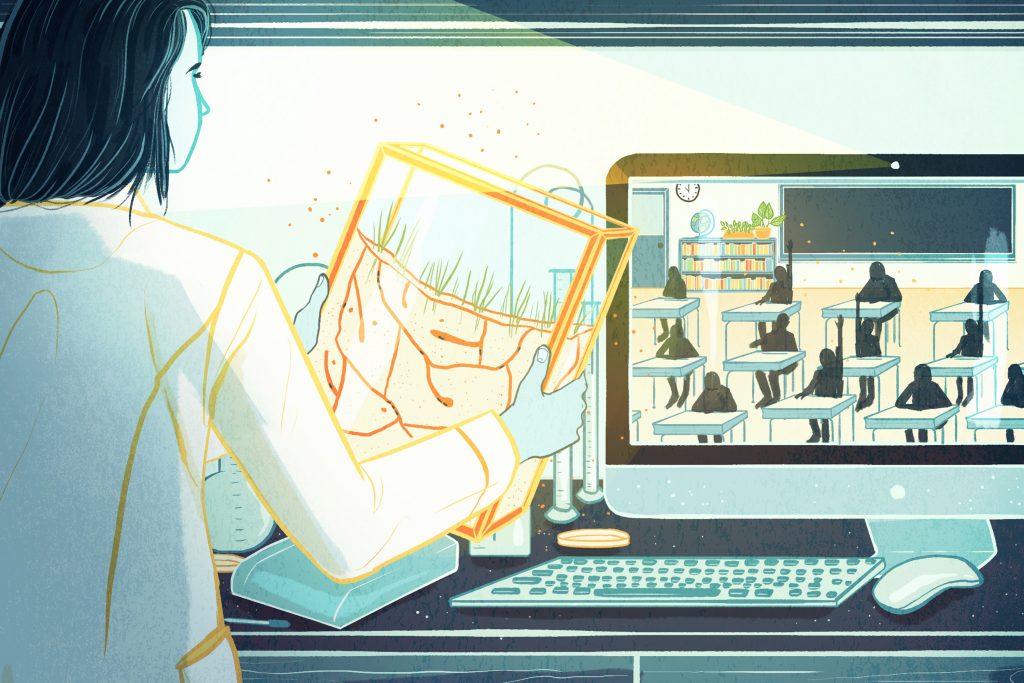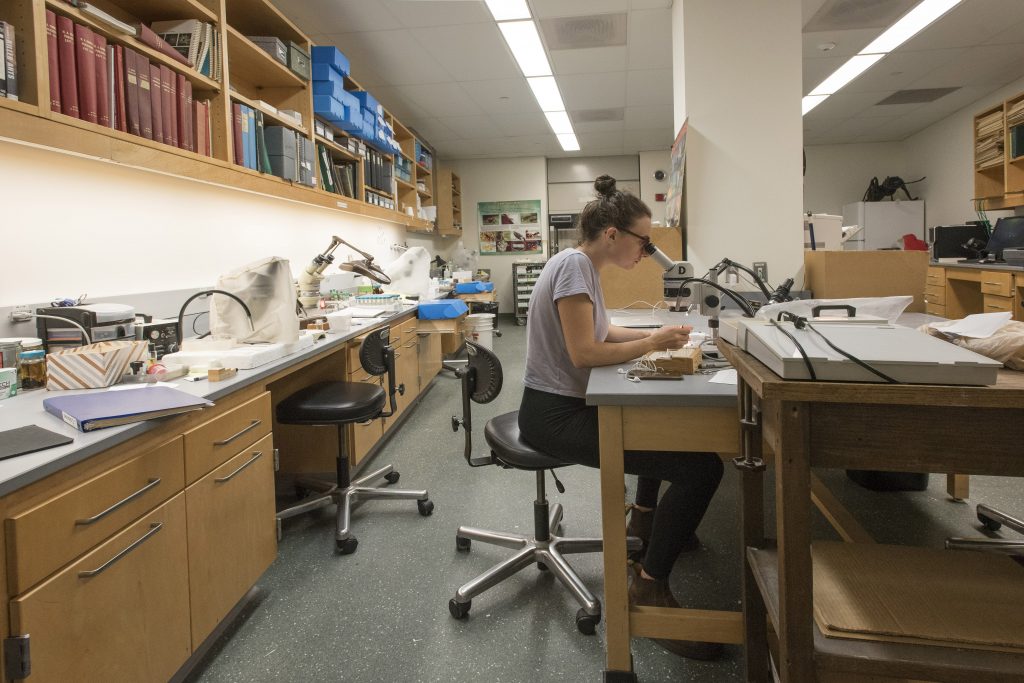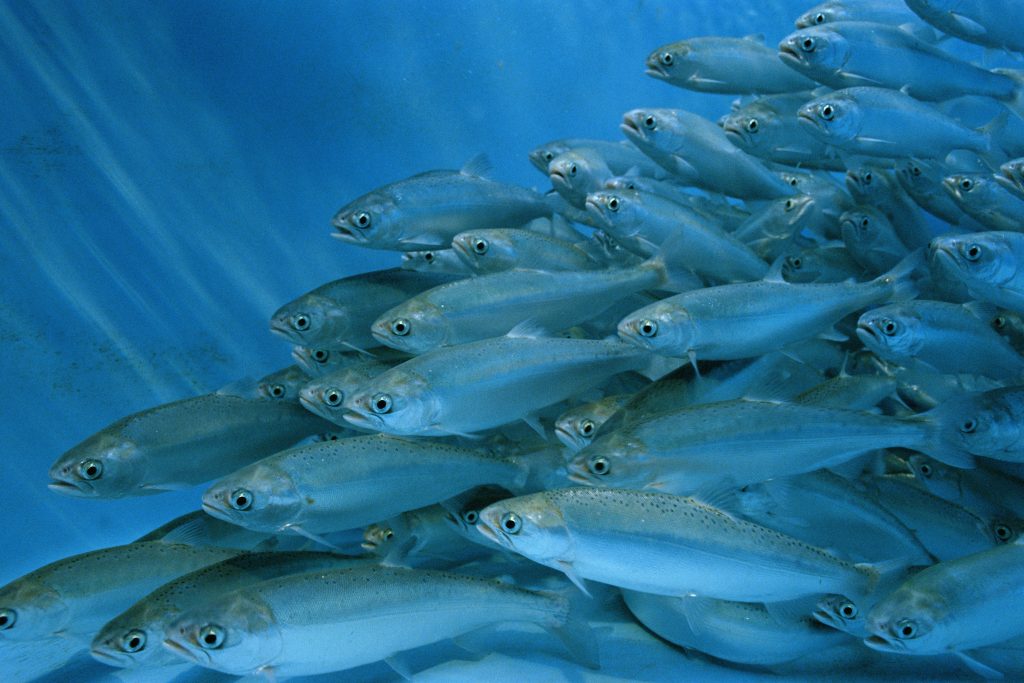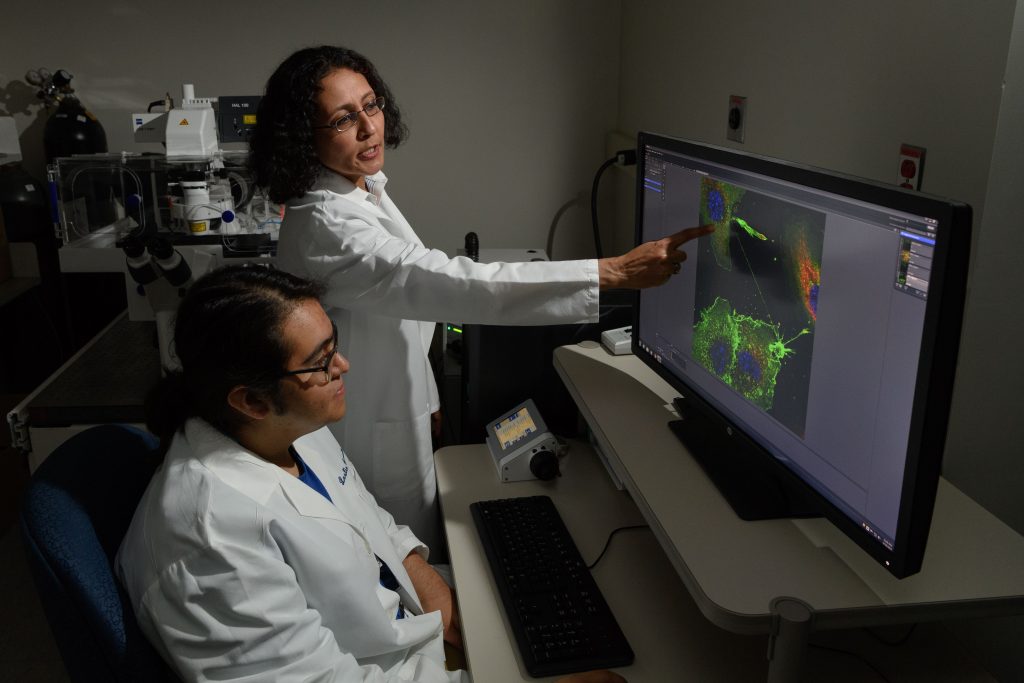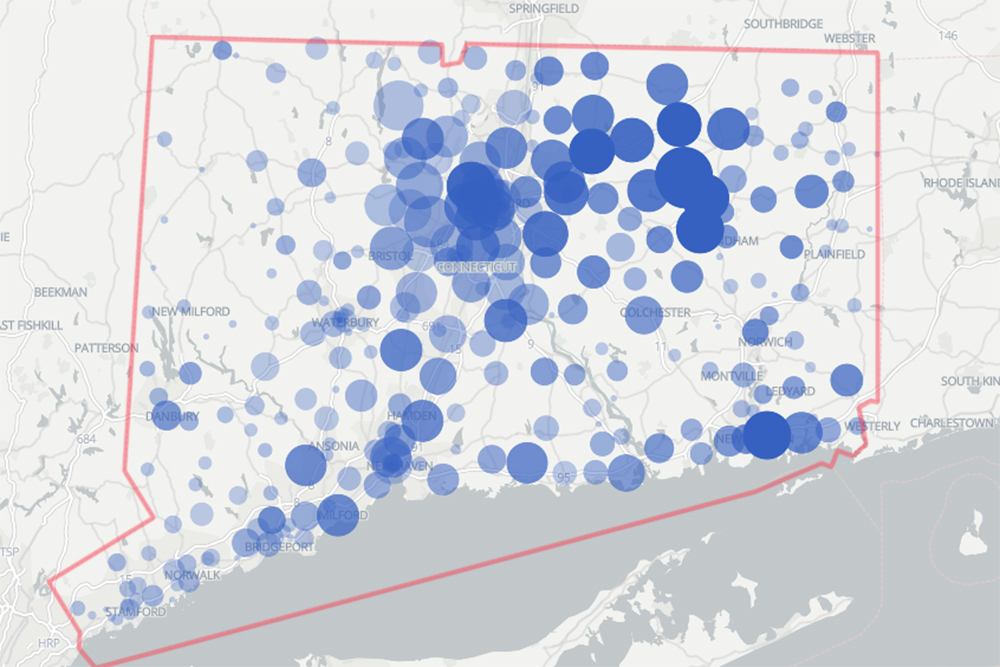Research & Discovery
Skype a Scientist
A program to engage schoolchildren in science has grown in 8 months from one graduate student in one UConn lab to thousands of scientists across 12 time zones and all 50 states.
October 16, 2017 | Kim Krieger, University Communications, with illustrations by Kailey Whitman
Old Specimens, New Insights
In UConn’s Biodiversity Research Collections, scientists, like detectives, are discovering new information about species today, even from specimens collected decades ago.
October 12, 2017 | Elaina Hancock
Fishing for New Antibiotics
A UConn chemist discovers a new mode of action for antibiotics, using antibacterial peptides found in fish.
October 10, 2017 | Kim Krieger
International Student Embraces Research Opportunities at UConn
Colombia native Brian Aguilera '19 (CLAS) was one of a select group taking part in a new research program for undergraduates to work with faculty at UConn Health.
October 6, 2017 | Eli Freund
Coveted Class: Baseball and Society: Politics, Economics, Race, and Gender
Human development and family studies professor Steven Wisensale has designed a curriculum about baseball that isn’t a softball.
October 5, 2017 | Jeff Wagenheim
Our Monuments to Inequality
Why today’s America is much like that of the late 1800s, according to Manisha Sinha, Draper Chair of American History, and author of the prize-winning book, 'The Slave’s Cause.'
October 4, 2017 | Christine Buckley
Cell Modeling Tool Makes Complex Calculations User-Friendly
The Virtual Cell, or VCell as it’s known at UConn Health, is a software platform that offers the most comprehensive set of modeling and simulation capabilities for cell biology in the world.
October 3, 2017 | Kim Krieger
Using Social Media to Take on Climate Change
Two UConn graduate students are on a mission to change the world one video at a time.
October 3, 2017 | Jessica McBride, Office of the Vice President for Research
Website Breaks Down Statewide Benefit of UConn Research Funding
State residents interested in seeing how UConn research dollars benefit local communities can now find that information quickly and easily through a new website.
October 2, 2017 | Colin Poitras
Adding $1 to Minimum Wage = Less Child Neglect
A recent study co-authored by a UConn public policy professor found that a dollar increase in the minimum wage can result in a nearly 10 percent decline in child neglect reports.
October 2, 2017 | Kenneth Best
